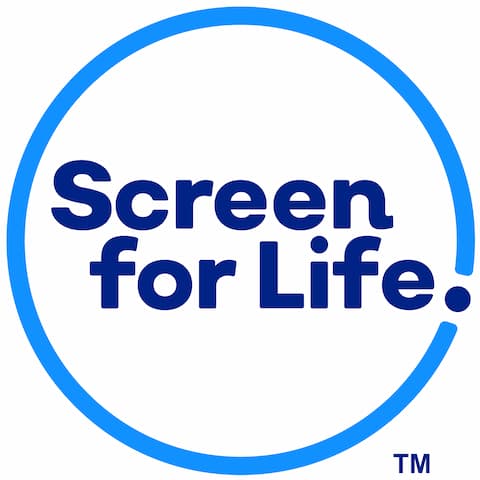Screen for Life: National Colorectal Cancer Action Campaign

CDC’s Screen for Life: National Colorectal Cancer Action Campaign informs men and women who are 45 years old or older about the importance of getting screened for colorectal cancer regularly. Screening tests help find precancerous polyps (abnormal growths) so they can be removed before they turn into cancer. This prevents colorectal cancer. Screening also can find this cancer early, when treatment works best. But many adults have not been screened as recommended.
Campaign Background
Campaign development is based on an extensive review of communication and behavioral science literature. Since 1999, CDC has conducted more than 225 focus groups nationally to assess knowledge, behaviors, and screening practices related to colorectal cancer, and to test campaign messages and materials with audiences the campaign intends to reach. The focus groups have been segmented by gender, age (45 to 54, 55 to 64, and 65 or older), and ethnicity (mixed ethnicities, African American, and Hispanic). Input is also sought from state health departments on the types of materials that would be most helpful to local efforts. See a list of publications.
Campaign Messages
- Screening for colorectal cancer saves lives.
- Colorectal cancer is a leading cause of cancer death in the United States.
- If you’re 45 or older, see your doctor and get screened for colorectal cancer.
- There are several screening test options. Talk to your doctor about which is right for you.
- Screening helps prevent colorectal cancer by finding precancerous polyps (abnormal growths) so they can be removed before they turn into cancer.
- Screening helps find colorectal cancer early, when treatment can be very effective.
- Don’t wait for symptoms to be checked. Precancerous polyps and colorectal cancer don’t always cause symptoms, especially early on.
- You need to get screened even if you have no family history. Most colorectal cancers occur in people with no family history of the disease.
Research Publications
- Cooper CP, Gelb CA. Opportunities to expand colorectal cancer screening participation. Journal of Women’s Health 2016;25(10):990-995.
- Cooper CP, Gelb CA, Chu J. Life cycle of television public service announcements disseminated through donated airtime. Preventive Medicine Reports 2015;2:202–205.
- Cooper CP, Gelb CA, Lobb K. Celebrity appeal: Reaching women to promote colorectal cancer screening. Journal of Women’s Health 2015;24(3):169–173.
- Ekwueme DU, Howard DH, Gelb CA, Rim SH, Cooper CP. Analysis of the benefits and costs of a national campaign to promote colorectal cancer screening: CDC’s Screen for Life National Colorectal Cancer Action Campaign. Health Promotion Practice 2014;15(5):750–758.
- Cooper CP, Gelb CA, Hawkins NA. How many “get screened” messages does it take? Evidence from colorectal cancer screening promotion in the United States, 2012. Preventive Medicine 2013;60:27–32.
- Cooper CP, Gelb CA, Chu J, Polonec L. Can donated media placements reach intended audiences? Health Promotion Practice 2013;14(5):656–662.
- Ekwueme DU, Howard D, Gelb C, Rim SH, Cooper C. Analysis of the benefits and costs of a national campaign to promote colorectal cancer screening: CDC’s Screen for Life: National Colorectal Cancer Action Campaign. Value in Health 2013;16(3):A142.
- Cooper CP, Gelb CA, Jameson H, Macario E, Jorgensen CM, Seeff L. Developing English and Spanish television public service announcements to promote colorectal cancer screening. Health Promotion Practice 2005;6(4):385–393.
- Cooper CP, Williams KN, Carey KA, Fowler CS, Frank M, Gelb CA. Advertising campaign on a major Internet search engine to promote colorectal cancer screening. British Medical Journal 2004;328(7449):1179–1180.
- Jorgensen C, Gelb CA, Richards TB, Cooper CP. Centers for Disease Control and Prevention. Donated television airplay of colorectal cancer education public service announcements—United States, 1999–2002. MMWR 2003;52(10):196–199.
- Jorgensen CM, Gelb CA, Merritt TL, Seeff LC. Observations from the CDC: CDC’s Screen for Life: A national colorectal cancer action campaign. Journal of Women’s Health and Gender-Based Medicine 2001;10(5):417–422.